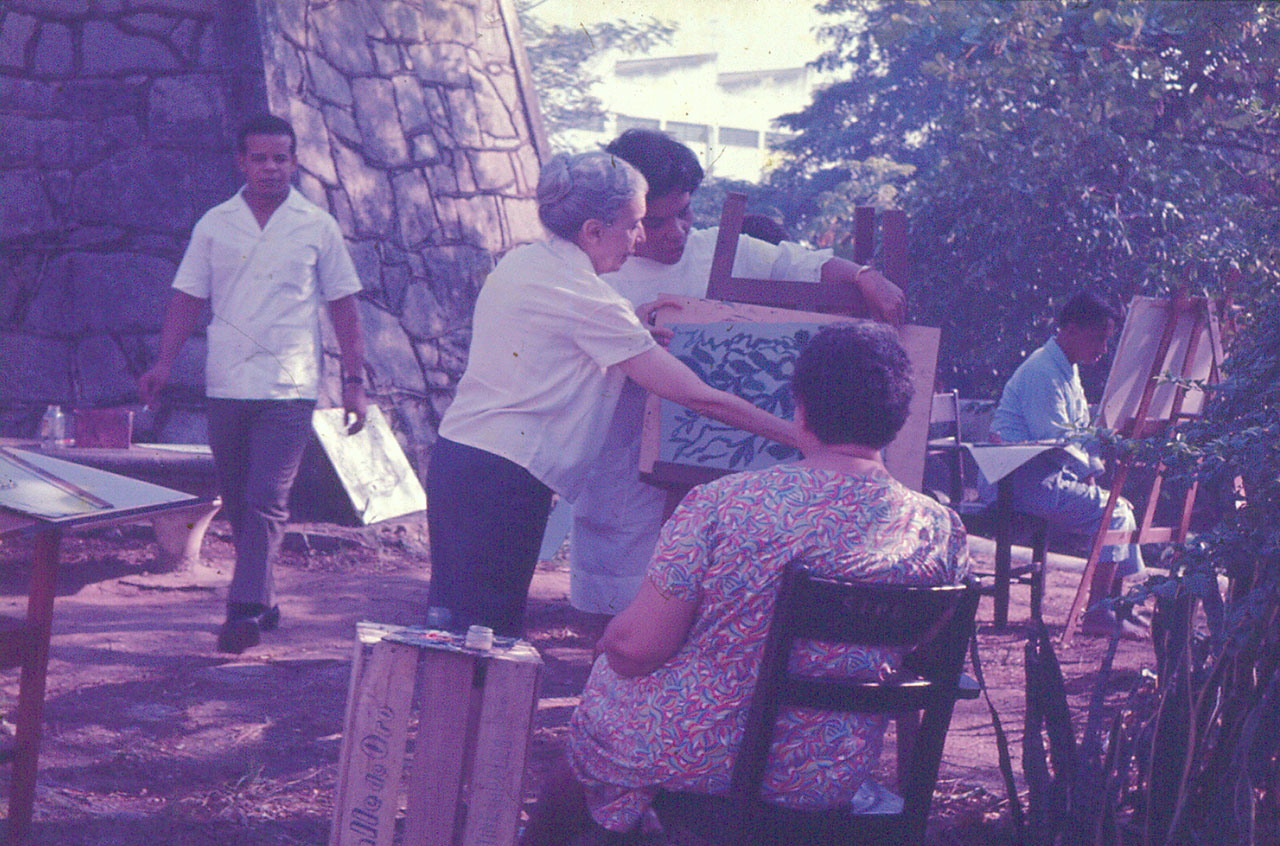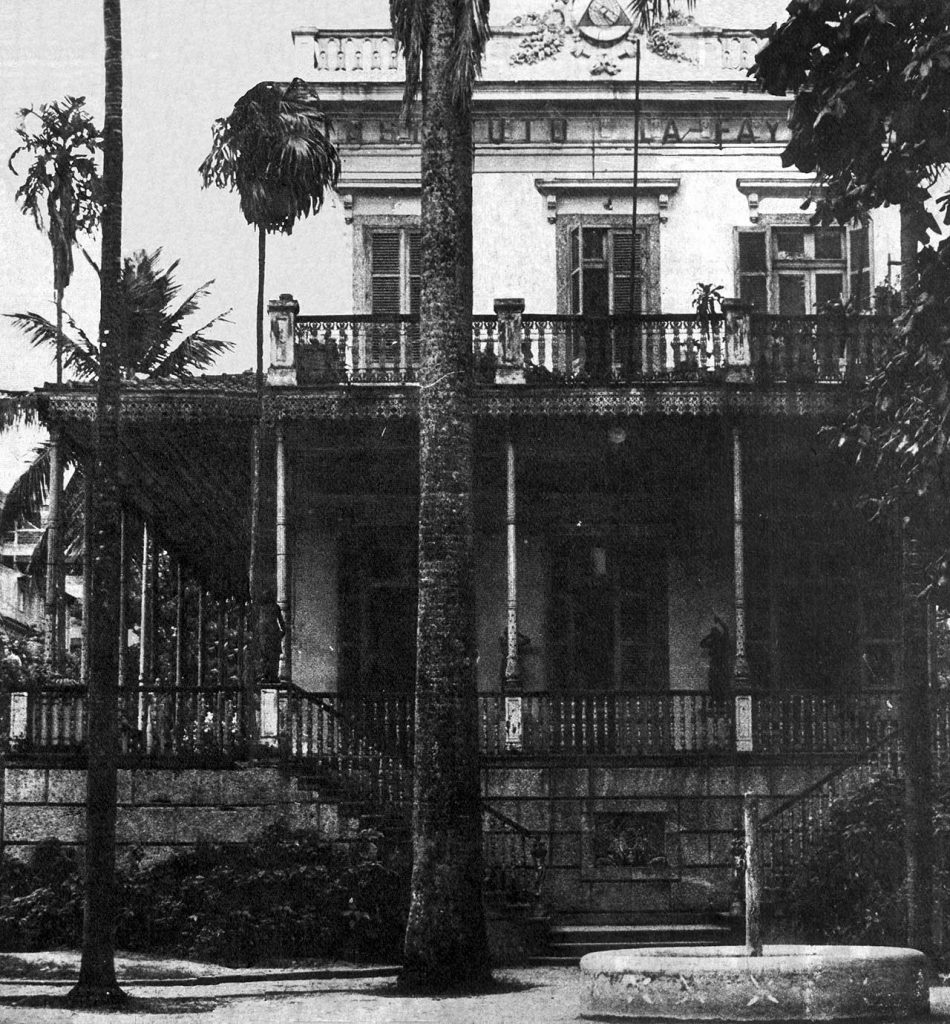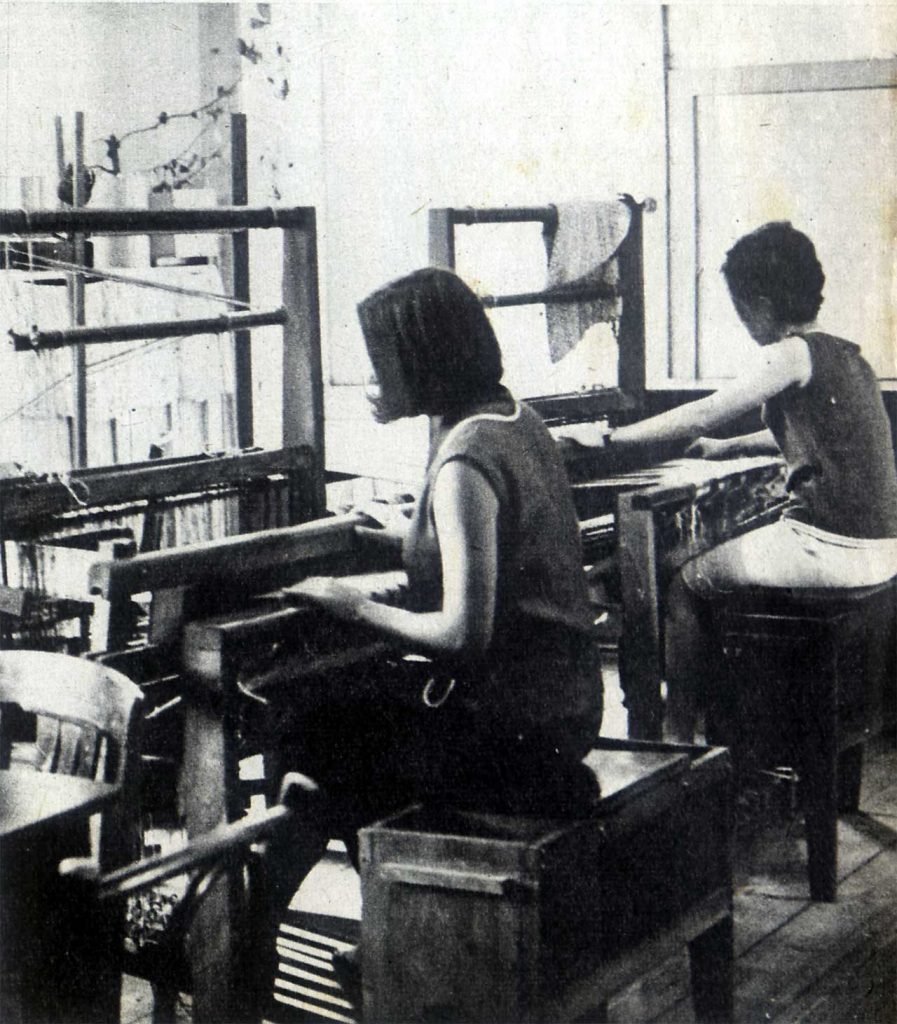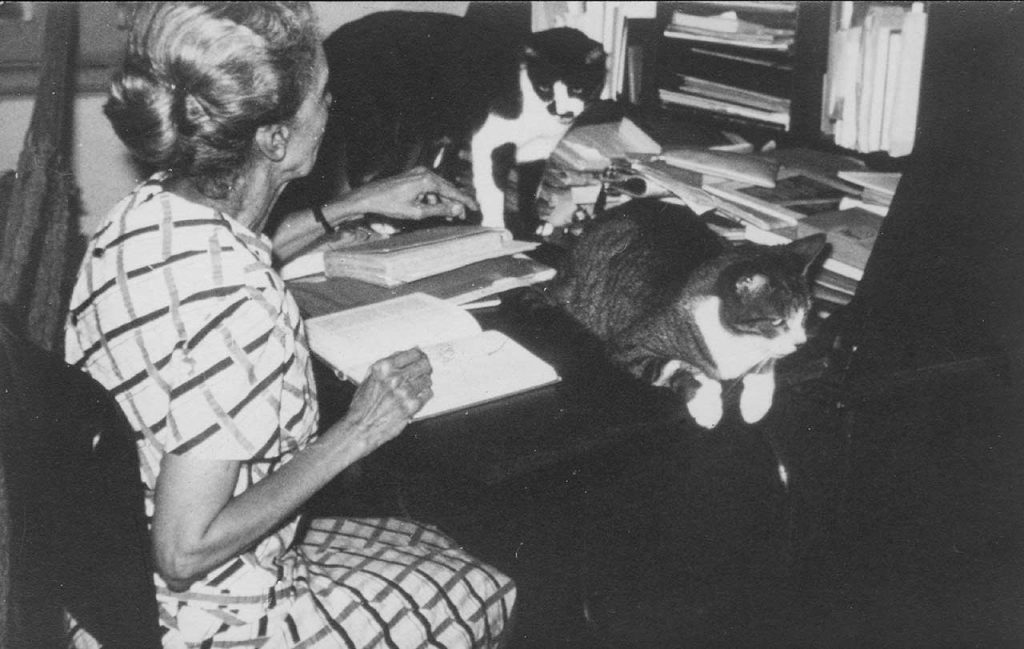The Museum
The Museum of Images from the Unconscious was created as a centre for study and research, and over the years has become an important site for the cultural heritage of humanity, open to researchers and to the general public.
Its therapeutic studios receive attendees on a daily basis, who create new visual documents and share their experiences in their contact with students, researchers or visitors. Its fundamental characteristic is to be a territory of freedom for the expression of inner experiences and the exaltation of creativity.
The works produced in the studios reveal the inner riches of the human being, contributing to changing stigmatizing paradigms about those with mental health problems.
The museum’s Technical Reserve stores, organizes and preserves this production, gathered in a collection of more than 400 thousand works including canvases, papers, models, texts and poems.
In addition to internal and external exhibitions, the Museum produces publications, documentaries, courses, lectures and a Study Group open to all interested parties.
THE MUSEUM IS A LIVING CENTRE FOR THE INTERDISCIPLINARY STUDY AND RESEARCH ON THE IMAGES CREATED BY THE ATTENDANTS OF THE THERAPEUTIC STUDIOS. THIS KNOWLEDGE HELPS IN UNDERSTANDING PSYCHIC PROCESSES WITH THE INTENT OF PROMOTING CARE, MENTAL HEALTH AND SOCIAL WELL-BEING.
Photos: Nise da Silveira SAMII Archive
Definition of MII
Opinions
“I trust in the continuity and expansion of this work. It is a collection that is already internationally renowned. I hope the local authorities acknowledge its high value and do what they can to facilitate its future development, because it represents a very important contribution to the scientific study of the psychotic process.”
“I was impressed with the paintings made by the Brazilian schizophrenics, because they present in the foreground the usual features of schizophrenic painting, but on other levels they display a harmony of shapes and colours that is not common in paintings made by schizophrenics. What is the environment like in which these patients paint? I suppose that they work surrounded by sympathy and by people who aren’t afraid of the unconscious.”
“I am profoundly impressed by the works of art I’ve seen here. Brazil’s artistic collection is growing and the world needs to know these paintings and drawings. I admire the people who helped the patients to free themselves in this way. Brazil should protect these works. They belong to the greatest spiritual heritage of this nation.”
“Casa das Palmeiras is a pioneer of open treatment in our country and in the world. Even before the great reform movements in Italian, French and American psychiatry, Dr. Nise da Silveira, with Casa das Palmeiras, signaled to the ministries of health of the world something that today has been incorporated into the health programmes of the World Health Organization and Pan-American Health Organization – the need for psychosocial care centres, psychiatric emergency centres, psychiatric outpatient clinics, psychiatry wards at general hospitals, and the possibility of home treatment.”
“The meeting with Nise da Silveira was an event that led me to meditate on the obscure paths within, the ones that lead to the secret spring of creatures, beyond the surface and the rumour of things, to cloisters and cultivated gardens, to the Mediterranean yonder beyond the horizon, to the inaccessible ground of night, which determine, after all, the imponderable laws that govern humanity.”
“Nise da Silveira played a decisive role, with impressive synchronicity, in the history of Brazilian psychiatry and art. If this introduced innovative methods for relating to patients, it also enabled Brazilian art to move in a very original direction, which was unthinkable before her.”
“The Museum of Images from the Unconscious, the work of Nise da Silveira, is a prodigious anthropological-existential collection, in whose archives one can read the history of man, of his progress from the origins to the present day, of his slow accumulation of experience, expressed through myths and symbols, whose structural axes constitute the collective unconscious – the phylogenetic heritage of the species.”
Timeline
MII
1960s
1968
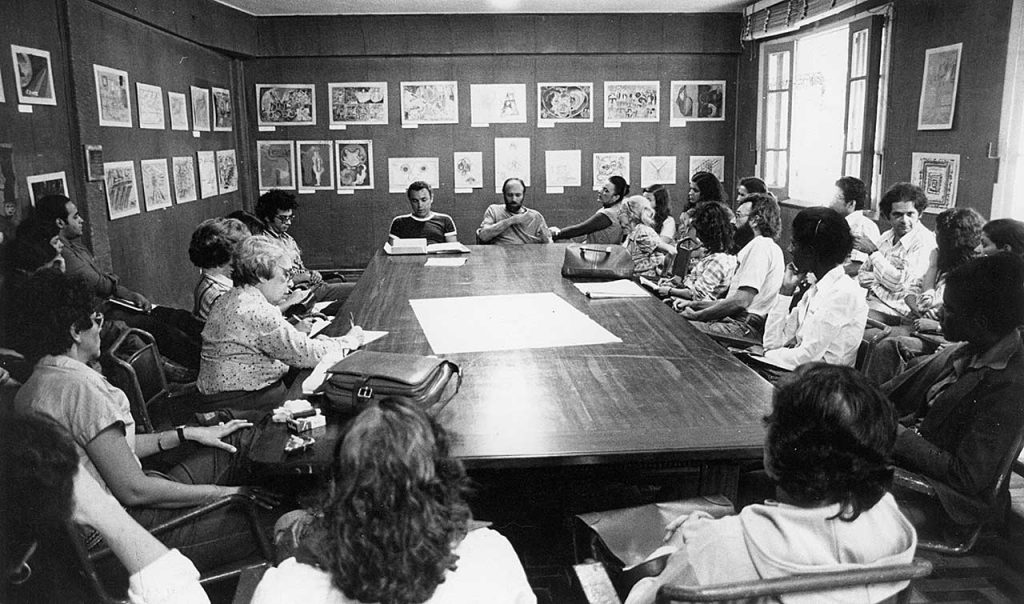
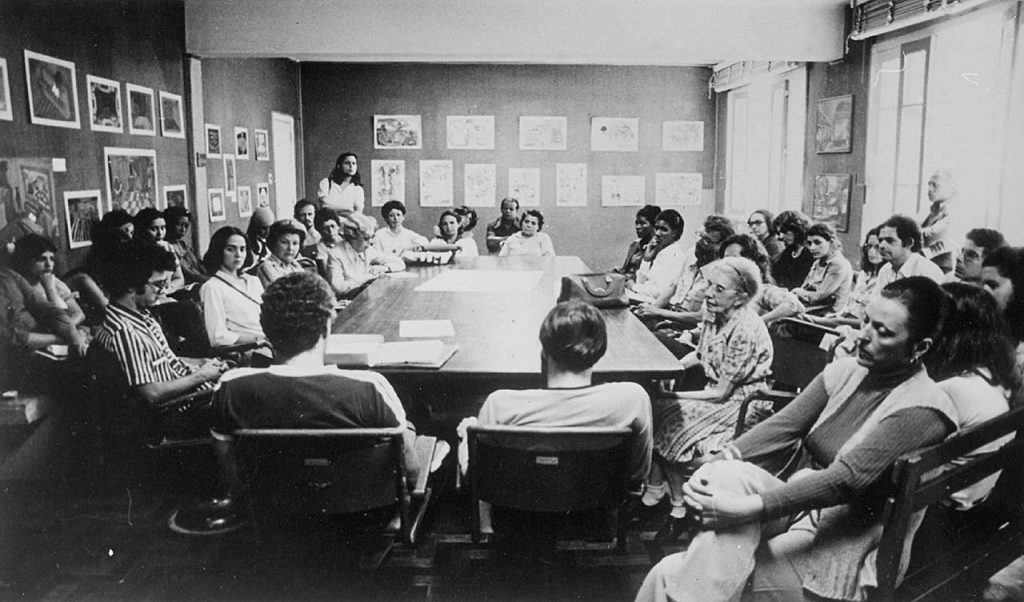
First meetings of the Study Group of the Museum of Images from the Unconscious, organizing courses, symposia, conferences and exhibitions, always based on images produced at the studios.
1970s
1974
The Society Friends of the Museum of Images from the Unconscious (SAMII) is founded.
1975
Dr. Nise retires and begins to release her work experience in books, films, audiovisual productions, courses and exhibitions.
1979
the museum receives resources from Federal Government carried out by the SAMII and realizes the Therapeutic Training and Museum Maintenance Project, which enables the restoration and storage of a significant part of the collection, the contracting and training of a technical team and the establishment of an administrative structure that continues to this day.
2000s
2000
The Centro Psiquiátrico Pedro II (Pedro II Psychiatric Centre) turns to the municipality administration and becomes part of the Rio de Janeiro Health Department. It adopts the name Instituto Municipal Nise da Silveira (Nise da Silveira Municipal Institute)
2003
The Board of the Instituto do Patrimônio Histórico e Artístico Nacional (the National Historic and Artistic Heritage Institute – IPHAN) unanimously approves the listing of the museum’s main collections as protected cultural heritage – more than 128.000 works in total.
Connections
Related Institutions
Creativity Workshop at the São Pedro Psychiatric Hospital (Porto Alegre/RS)
Bispo do Rosário Museum
Osório Cesar Art Museum
Collection de L’Art Brut
Lille Métropole – musée d’Art moderne, d’Art contemporain et d’Art brut
The Prinzhorn Collection
Team
Museum of Images from the Unconscious
Director
- Luiz Carlos Mello
Assistant director
- Bruno Araújo
Technical coordination
- Priscilla Moret
Museology
- Anelise Gonçalves Machado
- Mayara Pereira
Technical team
- Adriana Lemos
- Eduardo Pamplona
- Louise Machado
- Márcia Proença
- Glória Bina
- Cláudia Santiago
- Augusto Bapt
Education
- Jonathan Pereira da Silva
- Victoria Felix
Administration
- Monique Garcia Lemos
- Julia Vianna
Society of Friends of the Museum of Images from the Unconscious
President
- Margareth Dalcolmo
Vice-president
- Christina Gabaglia Penna
Project coordination
- Eurípedes Junior
General secretary
- Claude Pirmez
Assistant secretary
- Georgina Staneck
Treasurer
- Letícia Pirmez
Communication
- Vanessa Rocha
Fiscal board (holders)
- Glória Chan
- Gina Ferreira
Surrogates
- Priscilla Moret
- Mario Fraga
- Monica Álvares
Administrative team
- Sandra Valéria Dantas
- Marcia Brandão de Moura
Deliberative board
- Ana Maria Laet
- Cícero Mauro Fialho
- Clara Gerchman
- Elizabeth Mello
- Érika Silva
- Flávio Kapczinski
- Glayds Schincariol
- Ingrid Beck
- Luiz Carlos Mello
- Luiz Spinola
- Lula Wanderley
- Maddi Damian
- Marco Lucchesi
- Maria Beatriz Bley Martins Costa
- Maria Luiza Mello
- Mauro Domingues
- Max Perlingeiro
- Pedro Penido
- Roberto Berliner
- Rosana Lanzelotte
- Walter Melo

